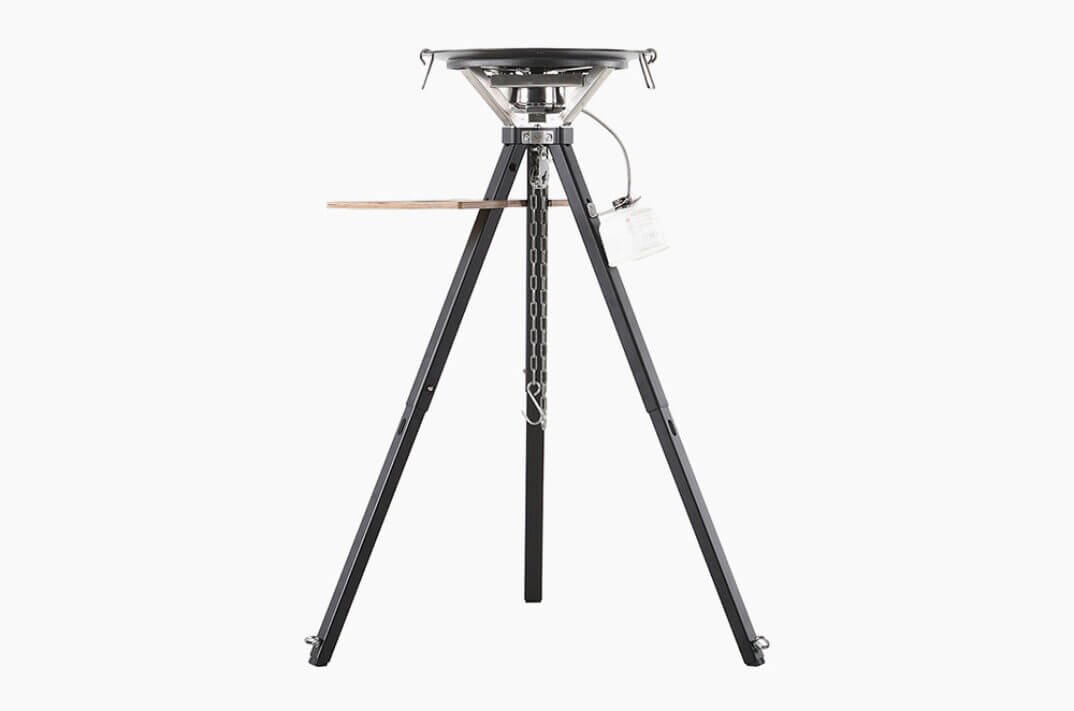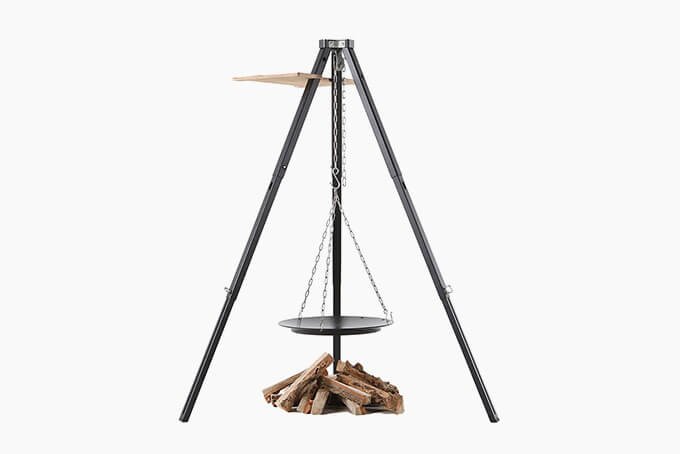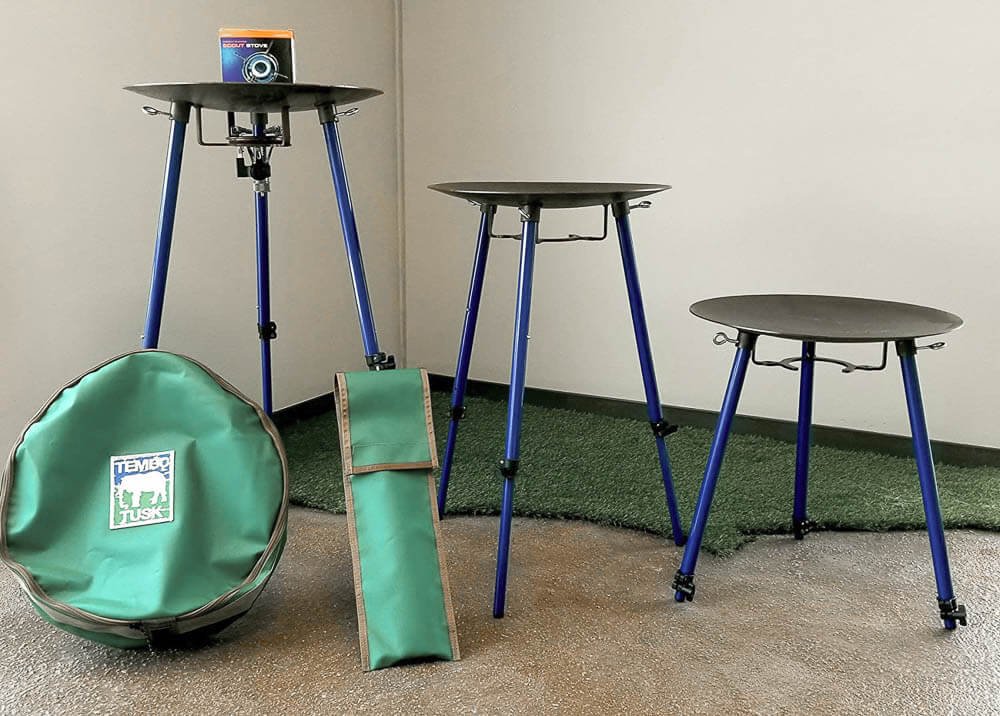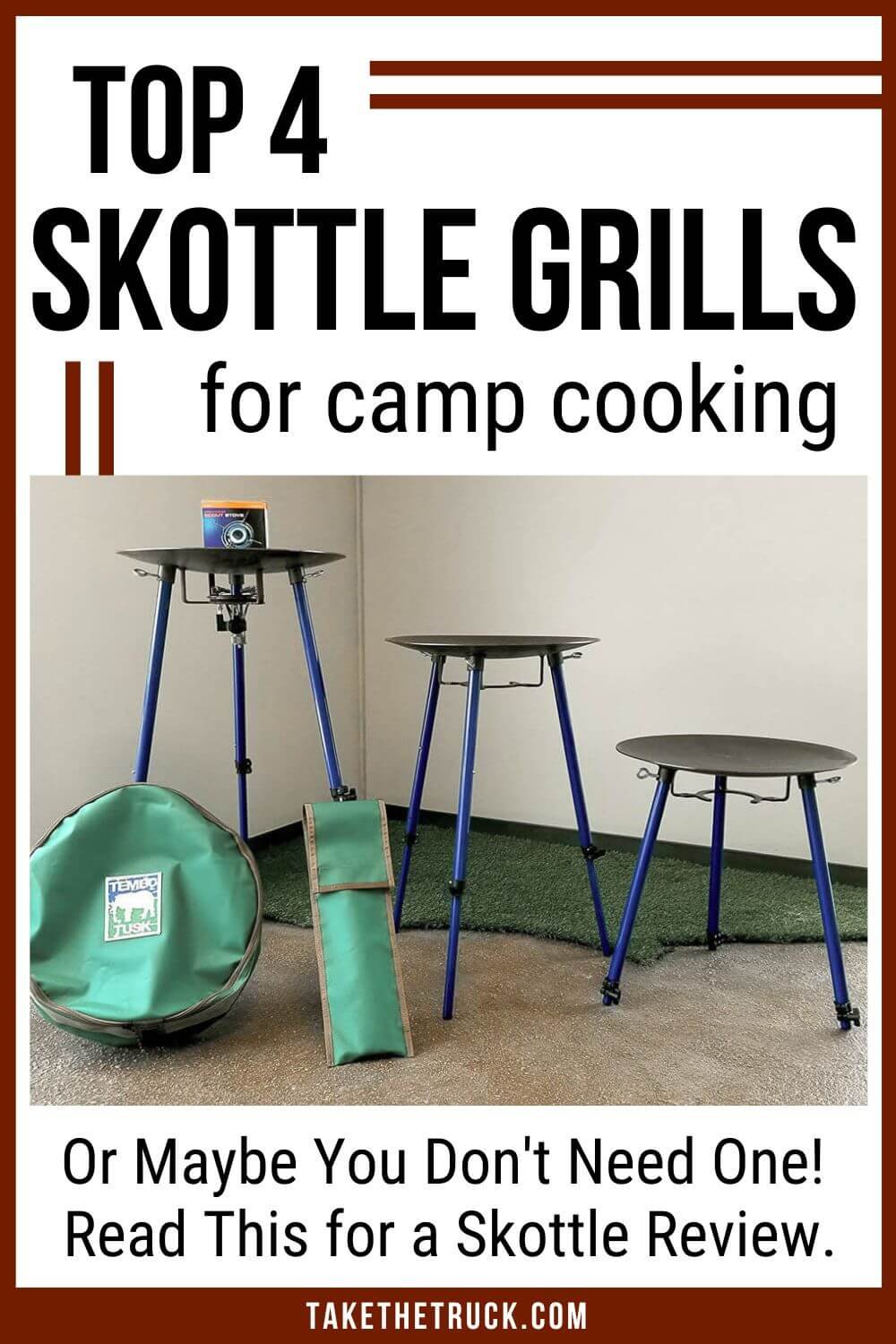The Truth About Skottle Grills
Skottle grills have grown recently in popularity, but are they right for you and your camping or overland cooking needs?
In this post we dive into the topic of skottle grills, including their pros and cons versus traditional camping cookware, as well as how to select one that’s right for you.
What is a Skottle?
The skottle - also known as the skottle grill or skottle braai - began as a byproduct of South African farmers’ ingenuity; it was a way to reuse old harrow discs for outdoor cooking and an alternative to the traditional braai. The skottle has now grown in niche popularity among overland campers and travelers around the world.
Modern skottles use hung propane burners to heat an elevated concave metal cook plate that’s used to cook any number of camping foods that would traditionally be cooked on a pan, cast iron skillet, or grill. This allows you to pack one convenient device for your camp cooking needs and leave the rest of these items at home.
Or that’s the theory, anyway.
*(This post contains affiliate links. This means we may receive a small commission, at no additional cost to you, if you make a purchase through a link. See our full disclosure.)
Skottle Grill vs. Traditional Camping Cookware And A Camp Stove
For years we’ve wrestled with finding the benefits of using this unique cooking apparatus. We’ve happily used a simple budget-friendly cast iron camping set* for over a decade without complaint, and at the end of this post we’ll give our honest opinion after spending some time trying out a skottle grill for camping and overlanding.
But first, let’s look at the pros and cons of the skottle grill and see how they stack up when compared to cooking with a simple set of camping pots, pans, and a camping stove:
Skottle Grill
PROS:
Easy to use - all-in-one pan, skillet, grill, burner
Self-supporting legs - allow you to more easily setup your cooking and food prep area away from your campsite in bear country
Good for cooking for larger groups
“Cool factor” or camp cook showmanship 😜
CONS:
Expensive
Heavy - often more than 20 lbs
Bulky - due to the large surface area and diameter of the cook plate packed size is often large and cumbersome to store
More tedious to set up than throwing a pan on a camp stove
Single burner and cooking surface makes it more difficult to prepare multiple dishes simultaneously
Limited fuel options - typically either propane or Iso-butane burners are used
Generally not practical for boiling water or brewing Delicious Camping Coffee
Not as versatile - some models can’t be used to cook over an open campfire, and baking is awkward and typically requires additional accessories
Traditional Camping Cookware and Camp Stove
PROS:
Weight is variable depending on your needs, kit, and the type of camping you do
Heavy Example: 12lb heavy-duty full two burner stove (like the 18” Partner Steel stove we use) and a 12lb cast iron combo cooker (also like we use) = 24lbs total
Ultralight: backpacking style single-burner camp stove (less than 1 lb.) with collapsible titanium cookware set (appx. 1 lb.) = 2 lbs. total
Not as bulky (depending on the camping stove and cookware used)
Fast to setup - ours takes under 60 seconds to setup and start cooking
Multiple burners - provide a variety of heat control and scalability for cooking for larger groups
Versatile - a cast iron combo cooker can be used to bake, boil, saute, fry, grill, steam, etc. over multiple heat sources - including a campfire
Multiple fuel options - not only can you simply cook directly over a campfire with your cast iron cookware, but camp stoves come in a variety of fuel types including wood, propane, butane, iso-butane, gasoline, diesel, kerosene, alcohol, etc. and some can use multiple different types of fuel.
Easy to boil water - so brewing camp coffee in a variety of ways is as simple as at home
CONS:
Multiple components required - camping stove, pots, and pans
Less “cool” factor / chef showmanship
More tedious to setup a cooking space away from your campsite in bear country, generally requires a table or flat surface to cook on
How to Use A Skottle Grill
While there’s some variation between the different skottle grills on the market, generally assembling and using a skottle grill is very straight-forward:
Remove the Skottle Grill cook plate, legs, burner, and fuel tank from its storage container
Assemble/extend the legs (if not fixed length) and insert them into the leg retainers on the underside of the skottle grill plate
Add optional side table accessory (if applicable, typically sold seperately)
Insert the burner into the burner retainer on the underside of the skottle grill plate
Attach windscreen
Attach the fuel tank (typically iso-butane or propane) to the burner
Ignite the burner and adjust the flame output
You can add a lid (typically sold separately), steaming rack (sold separately), or baking rack (also sold separately) as needed
And as far as what to cook on your skittle grill - the TemboTusk Skottle Cookbook is a great place to start.
Choosing The Best Skottle Grill
There are not a whole lot of options on the market for skottle grills, but here are our four favorites in order of cost so you can select one that’s right for you and your budget:
iKamper Disco Series Skottle Grill
Packed size: 15.75 in x 15.75 in x 22 in)
Weight: 27 lbs
Heat Output: 8455 BTU
The iKamper Disco Series Skottle is a unique approach to the skottle grill. It uses a height adjustable aluminum tripod (35” up to 47”) that integrates with a Kovea burner with an integrated wind guard (that can be used as a stand alone stove for boiling water or cooking with a traditional pot or pan), and a removable 15.75” cook plate. This design allows for cooking with the skottle’s cook plate either on top in a traditional skottle grill fashion, or with the cook plate suspended below the legs for cooking over an open fire. The cook plate is also unique in that it’s made of enamel coated cast iron, which means it doesn’t have to be seasoned like other skottle grills and it makes cleaning the skottle more straight-forward.
Tembotusk Adjustable Leg Skottle Grill
Packed Size: 18 in x 18 in x 28 in
Weight: 18 lbs
Heat Output: 10000 BTU
Tembotusk was instrumental in bringing the skottle into mainstream usage amongst overlanders and off-road campers in the United States. Their popular adjustable leg skottle* is the gold-standard. It uses a high-quality 18” steel cook plate with built-in leg and burner retainers, and it includes a Kovea Scout single-burner propane (or butane) heat source. With the adjustable legs, the height can be set from as low as 20 inches up to 36 inches, and they offer a 13” diameter lid (sold separately) as well.
ORIS CookSystem Skottle Grill
Packed Size: 17 in x 17 in x 32 in
Weight: approximately 30 lbs
Heat Output: 10,000 BTU (optional 65,000 BTU sold separately)
The ORIS CookSystem Skottle Grill uses a more versatile (albeit significantly heavier) removable 17” cast iron cook plate, and the burner can be used as a single burner camp stove for boiling water and making coffee when the cook plate is removed. Plus it includes a 15” diameter lid and carrying case. The height is non-adjustable at a fixed 32”.
DIY Skottle Grill
Example of a DIY Skottle Grill
Packed Size: Variable depending on cook plate and leg choice
Weight: approximately 25 lbs.
Heat Output: Variable depending on burner choice and fuel type
If you’re wanting a skottle experience without the typical skottle grill cost there are a variety of ways you can piece together or make your own DIY skottle. One method is to pick up a relatively cheap cast iron cook plate with legs* or a steel discata (we like this 22” diameter model made in the USA by Southwest Disk), and set up a separate burner, such as the super versatile multi-fuel MSR Whisperlight* underneath - or simply use it to cook over an open campfire.
Should You Use a Skottle Grill for Camping or Overlanding
Skottle Grills can be a fun and unique way to make cooking at camp a more social event, but only you can decide if this is worth the cost and caveats for your personal camp kitchen or overlanding setup.
While we love to support ingenuity and companies making things in the good ol’ USA, at this point we personally can’t justify using a skottle grill for our camping and overlanding adventures as a family - if we could, we’d likely either invest in the iKamper Disco for its versatility or go the more budget-friendly DIY skottle route.
With that said, we hope this post has helped you decide whether a skottle grill is right for you!
And if you want to know more about our favorite (and super versatile) way of cooking while camping and traveling, check out our post all about the cast iron combo cook set we use and love.
You can also read more about our top recommended camp stoves for a wide variety of campers.
As always, thanks for reading!
Related Posts:
Pin This Post!
We’d appreciate a share!







